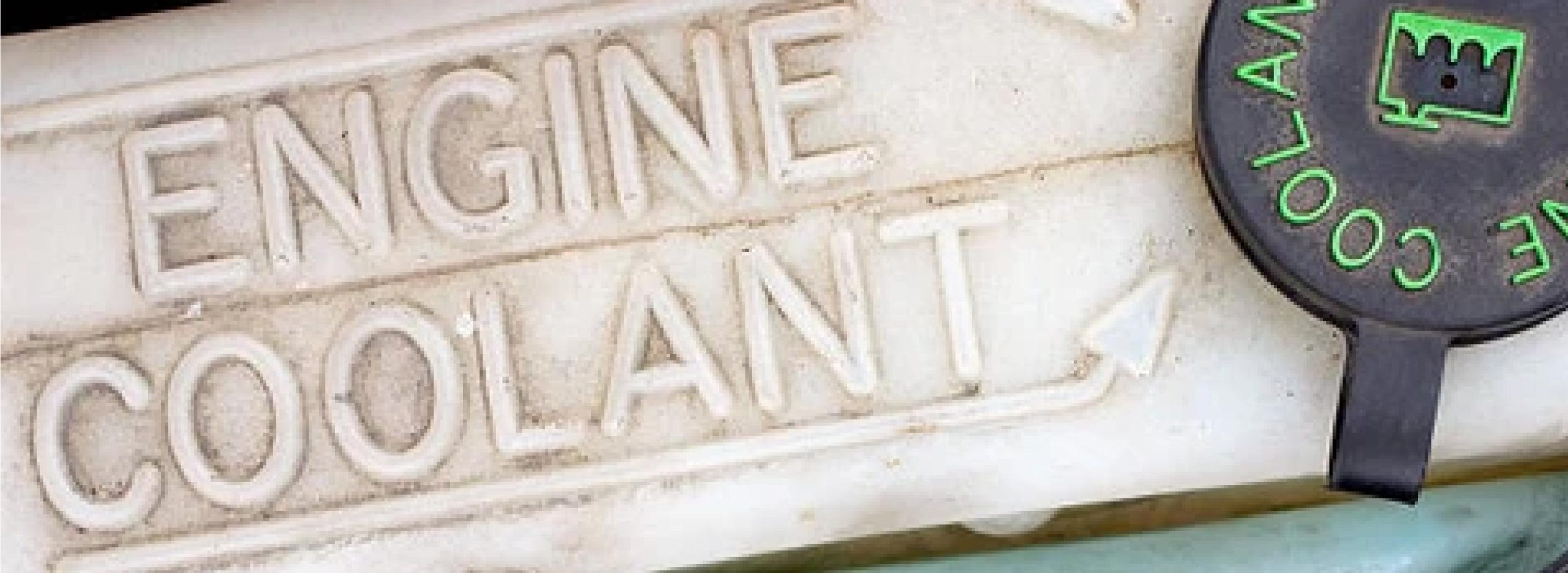As a southern California fuel supplier, it may seem strange to talk about engine coolant. The temperature is always perfect here (we’re kidding). No matter where you live, coolant is as essential to your engine as oil, especially in modern engines. Heavy-duty engines produce exceptional amounts of heat energy, and without coolant, that energy can overheat your engine and cause problems.
Engine coolant works by balancing out the heat produced as the engine runs. In the first days of the modern combustion engine, radiators were filled with water to cool things down. Now we use coolants, which are usually a 50/50 mix of ethylene glycol and water. Some engine coolants also contain inhibitors, anti-foams, dyes, and other additives. There are four main types of coolants. Here’s a quick breakdown of the different varieties:
- Inorganic Acid Technology (IAT): This type of coolant is the most commonly used in cars and light-duty trucks. It’s derived from low- silicate materials and is usually pink or green. They often contain additives to prevent pitting and corrosion and require frequent service and flushing to keep the engine working properly.
- Organic Acid Technology (OAT): These coolants are derived from organic acids, which gives them a long service life. They are often used in heavy and light-duty diesel engines, natural gas, and some gasoline engines.
- Nitrite Organic Acid Technology (NOAT): These coolants are similar to OAT coolants but contain nitrite for better liner pitting protection. They often offer extended service and are used mainly in heavy-duty engines.
- Hybrid Organic Acid Technology (HOAT): These types of coolants are a combination of IAT and OAT coolants, containing both low silicate and nitrite elements.
Modern coolants are designed to keep the temperature balanced in the engine. But today’s modern engines run hotter and faster than ever before to meet increased fuel efficiency demands. That means that choosing the right coolant for your engine is more important. The wrong coolant could lead to engine damage, reduced fuel efficiency, and increased emissions.
Many of our customers use NOAT coolants for their heavy-duty equipment. These types of coolants are great for heavy-duty engines, and many offer extra engine protection. But one of the big issues caused by the use of NOAT coolants is increased corrosion. Over the years, equipment manufacturers have changed the materials they used to build engines, and aluminum has been increasingly utilized. Many engines now feature Controlled Atmosphere Brazing (CAB) aluminum radiators and engine components. The nitrites in NOAT coolants can interact with aluminum that has undergone this process and cause corrosion, pitting, and engine failure.
To help prevent these issues, Chevron introduced Delo ELC Advanced coolant. This NOAT formula coolant uses new patented technology to stop the coolant’s nitrites from interacting with the radiators’ aluminum. The formula reduces equipment downtime for repairs and maximizes engine performance, even in extreme conditions, and lasts longer between service intervals. If you think that this coolant would be a good fit for your heavy-duty engines, ask our team about adding it to your regular order.
Corrosion isn’t the only engine issue that coolant problems can cause. Ensuring that your engine coolant system is in good working order is an essential part of a regular maintenance schedule. If you don’t make engine coolant system maintenance a priority, your engines could be at risk of:
- Corrosion
- Liner cavitation
- Engine Failure
- Overheating or Engine Freezing
So what can you do to keep your coolant system in good working order? Here are a few of the best practices for proper engine coolant maintenance.
- First, make sure that you are using the right coolant for your engine’s needs. Follow your equipment manufacturer’s guidelines for coolant selection or a trusted mechanic’s recommendation. Many industries use a coolant color guide to determine which type to use. This may be effective, but many coolant formulas have or are changing colors, and some of these guidelines may be incomplete or out of date. Always make sure you are using the most up to date information for your coolant maintenance.
- Always make sure that your coolant system is operating properly. You don’t want to have too little coolant in the system as it will not protect the engine. Regularly check your coolant levels as well as the overflow tank and radiator cap. Radiator caps are an integral part of the coolant system as they hold in the pressure. If the cap is damaged or not working properly there won’t be enough pressure to ensure proper operation.
- Regularly test your coolant. Analysis of your coolant can determine if any degradation is happening. Over dilution with water or contamination can cause the coolant to break down and lead to engine issues like corrosion. Make sure that your coolant is tested for proper pH levels. You want to make sure that your coolant’s pH is always above 6.5. Anything lower will be too acidic.
- Follow proper service intervals. Regularly flushing out your system and replenishing the coolant is essential maintenance for a heavy-duty engine. These days coolants are designed for longer service intervals, so always consult your service manual or follow your technician’s advice.
- Avoid mixing different coolants. It’s always a best practice to make sure that you stick with one type of coolant instead of mixing several together. It used to be considered okay to interchange coolant types but now that many coolants contain a variety of additives and other chemicals it’s best to flush out your radiator system before making a switch.
We know that there are so many coolant options out there. Picking the right one for your needs isn’t always easy. Let us help you find the right products. We know your business and how you use your equipment. We are here to help you order the products that will prolong your equipment’s life. Call us to place your order today.
